Hydrangea "Pastel green": description, recommendations for growing and reproduction
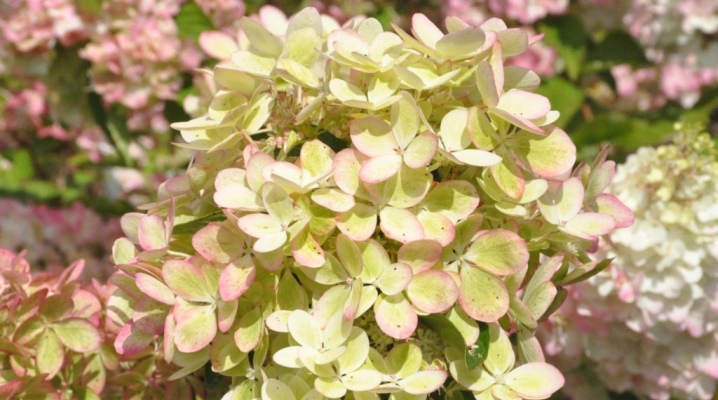
All gardeners want to decorate their plot with some interesting flowers and plants to create a unique design and surprise their neighbors. It is for this reason that many biologists are trying to develop new varieties of plants familiar to us.
History of origin
This variety was bred in 2016 by French breeder Jean Reno. The name of this hydrangea is "Pastel Green", it is referred to as a paniculate species. An ornamental plant was presented in August 2016. This variety was awarded a silver medal at an exhibition in Holland "Plantarium - 2016". The breeder is an employee of Shapo and has introduced new varieties of hydrangeas in the past.
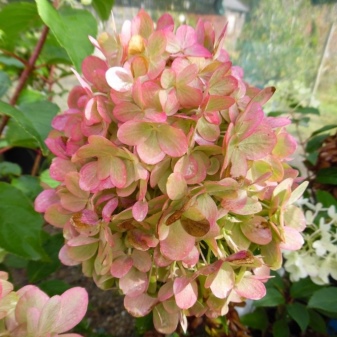
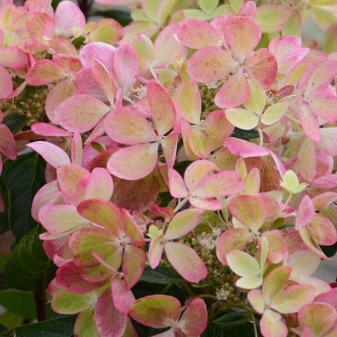
Features and description of the plant
A distinctive feature of this variety of hydrangeas is the unusual color of the petals of the inflorescences. During the summer season, they can change their color several times. The color palette is quite extensive, so at the beginning of the season you can observe the white petals, and by the end you can see the petals of a pink or wine shade. When moving from one color to another, they gradually mix, which is similar to the palette of artists, and is breathtaking.
During the season, the color change occurs from 2 to 7 times.

Usually the first color is white, then it is replaced by creamy shades, after which there is a transition to a greenish palette to pistachio tones. Further, the flowers take on salmon colors. After that, there is a smooth transition to coral and pink, and closer to autumn and the end of flowering, there is a change to wine-bloody shades. If you choose the right time, you can catch several shades at once on the inflorescences., and then the plant looks truly magical and fascinates with its beauty and uniqueness. This feature makes Pastel Green very popular.
Another plus of the plant can be considered its rapid growth, which allows you to enjoy flowering soon after planting.
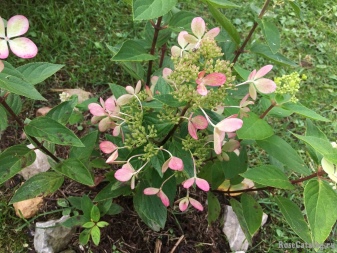
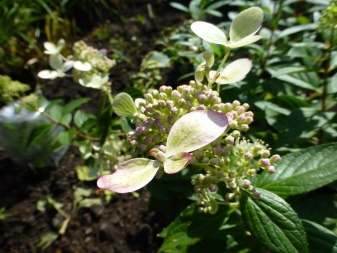
The inflorescences of the plant are quite large, resemble a cone in shape, their length can reach up to 20 centimeters. The flowers are in the shape of a quatrefoil, and the leaves are blob-like and have the usual green hue.
The size of the shrub is compact: its height reaches 1.5 meters, and its width is 1.3 meters. Such a small size allows gardeners to plant this plant even in small gardens.
Another feature can be considered the fact that this variety can be grown in a large pot and placed on your balcony if you do not have a garden, and you really want to plant a plant.
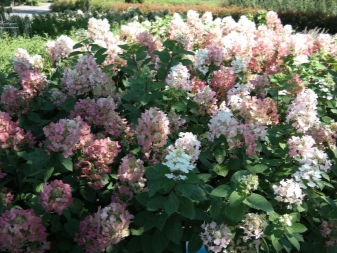

Flowering usually begins in June and ends in September, but under favorable conditions and warm weather, bud formation can be observed until October.
The plant has large and airy inflorescences. In appearance, they can be compared to a "cloud" of cotton candy, since the plant blooms very luxuriantly.
When planting a flower, you should not worry too much about the fact that it is necessary to create any conditions for it, since it grows well in direct sunlight, while its petals remain saturated in color.
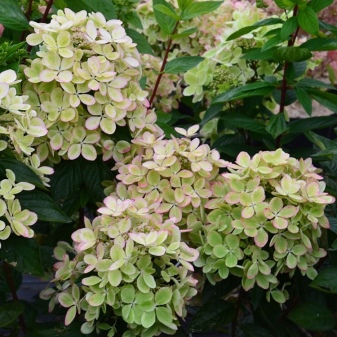

Care
It is believed that hydrangea shrubs are unpretentious to care for, however, like any other plant, minimal care is necessary.
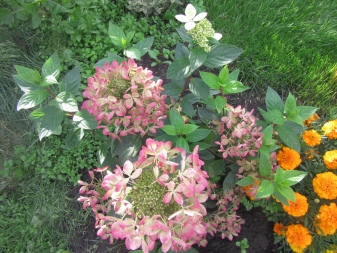
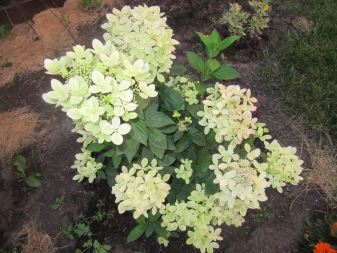
It is worth watering regularly, but it is necessary to monitor the moisture content of the soil to avoid waterlogging. For Pastel Green, the soil can be allowed to dry out. Therefore, if you planted it at a summer cottage, then you should not worry too much, since watering is also suitable for the shrub once a week. Water should be poured directly under the bush, as the accumulation of moisture on the leaves and inflorescences can harm the plant.
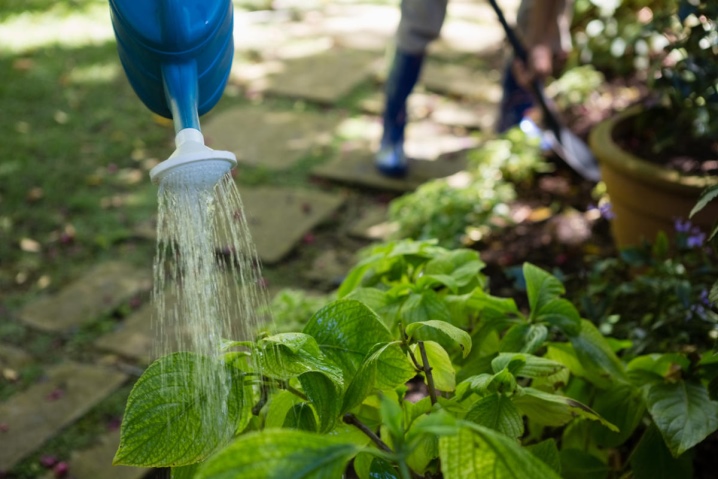
Do not forget about feeding the shrub. This procedure is usually performed in the fall and spring. For the autumn months (September and October), fertilizing with mineral fertilizers is characteristic, for the spring period, a urea solution in a ratio of 20 to 1 is better, that is, 20 grams of urea is enough for 1 bucket of water. For an adult shrub, approximately 20 liters of top dressing is needed. When the hydrangea blooms, it is worth applying complex mineral fertilizers 2 times a month.
Better to take a break of 15 days.

Mulching is worth doing because it inhibits the growth of various weeds and helps to retain moisture in the soil, which makes it possible to water the plant less often. It is worth doing mulching from sawdust, peat moss and chopped tree bark.
This panicle hydrangea perfectly tolerates negative temperatures down to -30 degrees, so it grows well in our climate. For this reason, the plant should not be covered for the winter period.
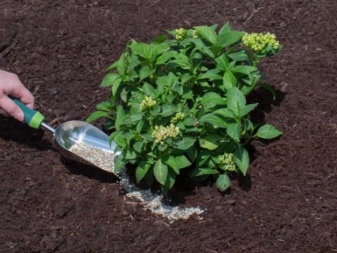
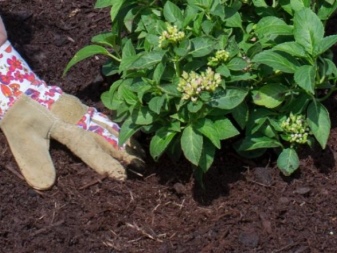
The variety is not very whimsical, so it can be planted in any soil, but it is still advisable to choose a fertile one - for example, soil saturated with humus is optimal.
Planting should be done based on the design of the garden, without fear of areas that will be exposed to sunlight. It is not recommended to plant in the shade.
However, if your beauty grows poorly, you should pay attention to the soil composition - it is better to choose an acidic soil.
The shrub should be pruned every year.
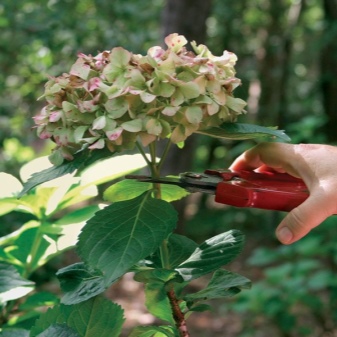
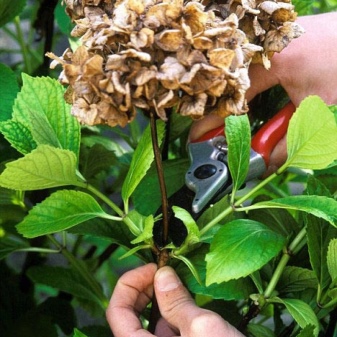
Pruning rules
Usually, this procedure is carried out in the spring, so that by the time of flowering the plant looks as it should. By pruning, the hydrangea will look healthy and beautiful, and the inflorescences will become more luxuriant. It is better to try to catch the period when the kidneys swell.
It is not recommended to prune shrubs in autumn, as this can harm and reduce the plant's hardiness before winter, as a result of which it can die.
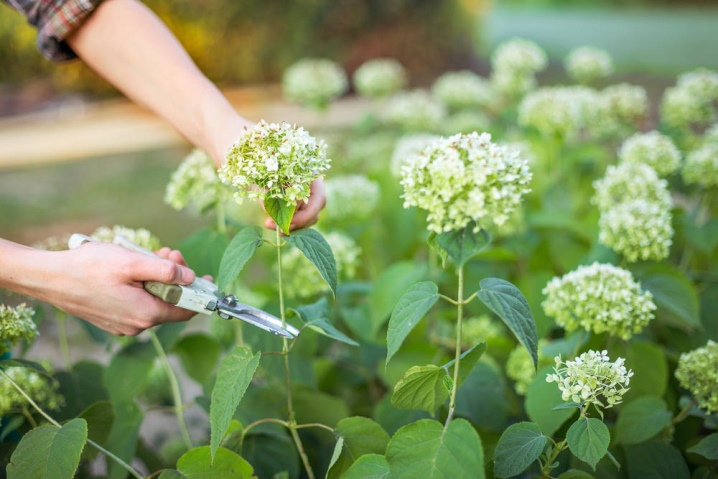
There are several types of trimming, namely:
- sanitary;
- formative;
- anti-aging.
During sanitary pruning, as a rule, dried branches and old inflorescences are removed.
Forming gives the shrub a picturesque look and helps control the density of the plant. Usually they are engaged in this type of shrub decoration in the first 2 years after planting. This makes it possible to give the plant the necessary shape and allows you to set the desired direction of growth for new shoots.
The rejuvenating look of pruning provides an opportunity to refresh the hydrangea's look.

The execution procedure and basic rules are as follows:
- before planting, the plant must be thinned out and damaged parts must be removed;
- after a year, sanitary pruning should be performed to enable the plant to develop a strong root system;
- from the second year, the formation of a bush begins and the removal of old inflorescences and shoots, it is worth leaving only the strong ones so that the plant can survive the winter well.
It is important to remember that every autumn old inflorescences must be removed in order to avoid the accumulation of snow on them, since the shrub can break under its weight.

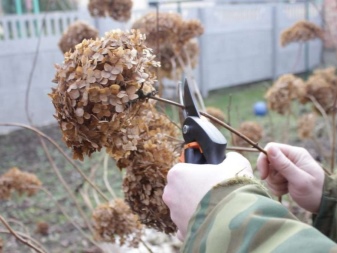
Application in landscape design
Since this species can get along well with any sort of hydrangea, they often make up various compositions in the plots. Although, due to its uniqueness, Pastel Green can be planted alone.
The shrub goes well with cereals. For example, you can plant miscanthus, common millet, or feather grass nearby.Such cereals, due to their inconspicuousness, perfectly emphasize the beauty and sophisticated appearance of this variety.
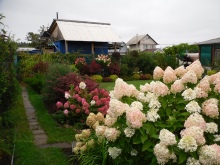

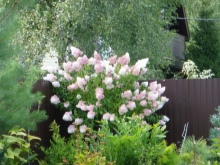
Where is the best place to buy?
Due to its unpretentiousness, beauty and good tolerance of negative temperatures, the shrub is in great demand, therefore, in order not to fall into the trap and not buy a fake, it is better to contact trusted nurseries with appropriate certificates.
The variety is bred only in France in a nursery called Renault... In Russia, only a few companies can offer this type of hydrangea. Two representative offices are located in Moscow: the Leskovo nursery and the Poisk agrofirm. In Samara, the Vera Glukhova Garden Center has such an opportunity, in Tyumen, panicle hydrangea can be bought in the Akhmechet nursery, and in Togliatti, the products are sold by the Ely-Pali nursery.
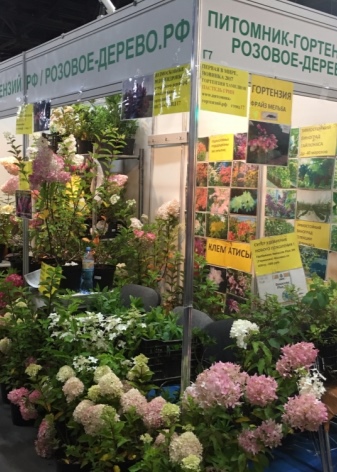
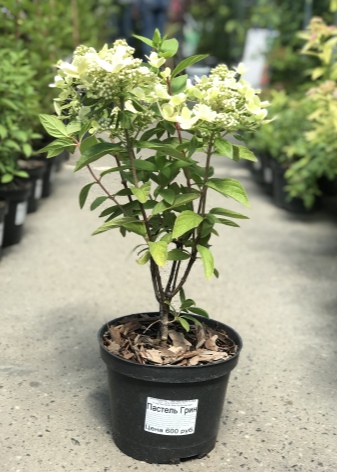
Best of all, this variety takes root in the middle zone of the country, as well as in the Urals and Siberia, since in dry winter conditions hydrangea does not freeze and does not die. Do not forget that due to its compactness, it can also be grown in apartments, like an ordinary flower, and even in such conditions it will remain the same ornamental shrub.
All about the cultivation and care of the "Pastel Green" panicle hydrangea, see the video.



































































The comment was sent successfully.